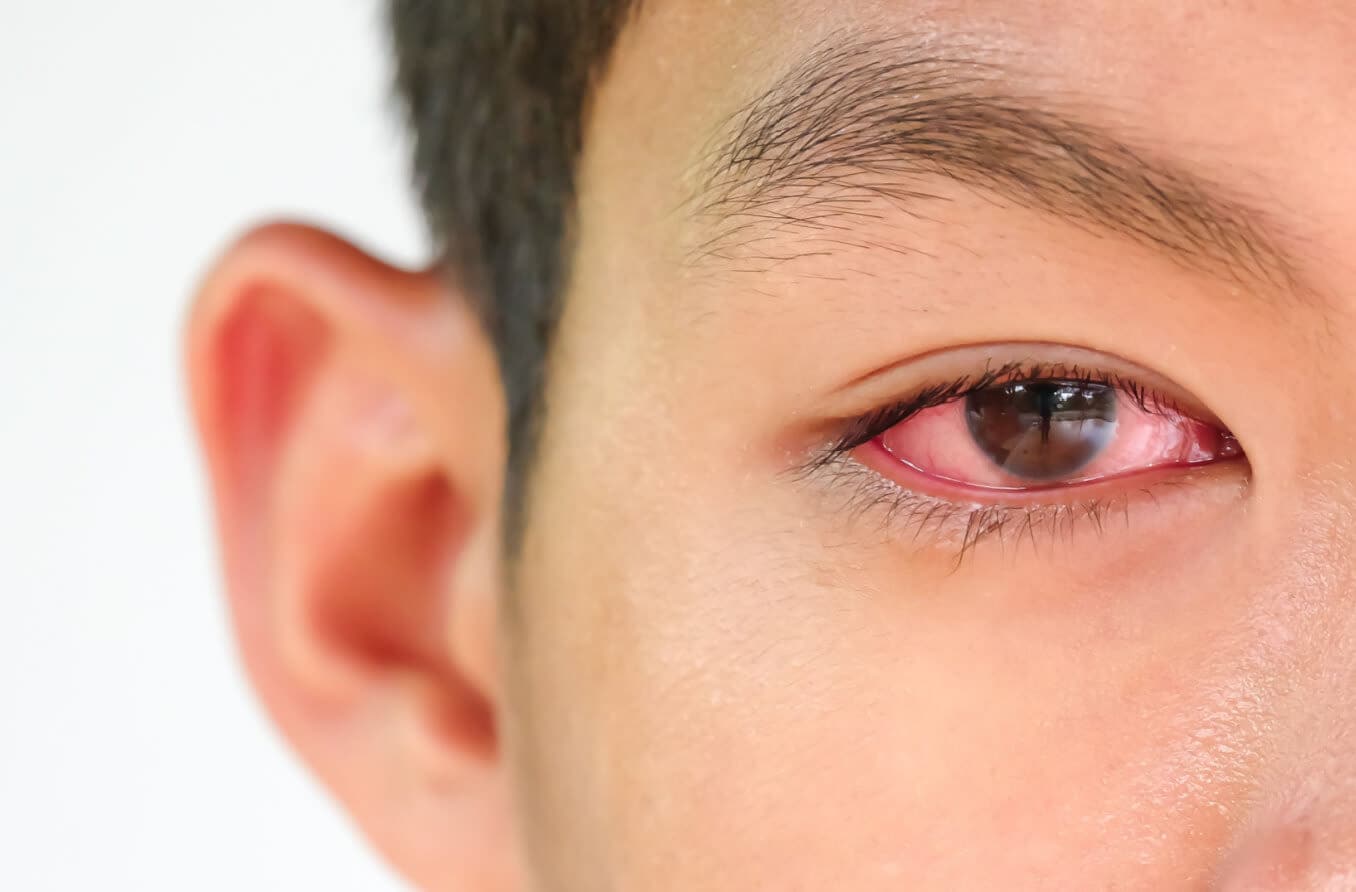What is Cogan’s syndrome?
Cogan’s syndrome, also known as Cogan syndrome or CS, is a chronic autoimmune disease that affects the eyes and inner ears. This disease can cause eye redness, light sensitivity and blurry vision. The classic or typical form of Cogan's syndrome has symptoms similar to those of Meniere's disease, such as tinnitus, vertigo, nausea or vomiting, and hearing loss.
CS occurs most frequently in young Caucasian adults in their 20s and 30s, though it can occur at any age. It affects both males and females. Cogan’s syndrome is rare, with fewer than 250 cases reported. If left untreated, CS can threaten a person’s sight and hearing.
In addition, up to four in five individuals with CS have symptoms such as muscle and joint pain, headaches, and fever. Some people also develop complications due to inflammation of the blood vessels, particularly in the heart.
Symptoms
Various symptoms are associated with Cogan’s syndrome, in both the eyes and ears. Some of the most common eye symptoms are:
Eye inflammation, or keratitis (corneal inflammation)
Eye pain
Some of the most common symptoms related to the ears are:
Tinnitus, or ringing in the ears
Hearing loss
Dizziness or poor balance, also known as vertigo
Complications
Life-threatening complications are uncommon. But, up to 15% of individuals with Cogan’s syndrome develop vasculitis, which can cause the blood vessels to narrow, restricting blood flow to organs and tissues in the body. This affects the large arteries, like the aorta. If vasculitis occurs, it can cause the following heart issues, which can lead to heart failure:
Aortic insufficiency, a heart valve condition
Aortic aneurysm, a bulge in the aorta, which can rupture
Aortic dissection, a tear in the wall of the aorta
Mitral insufficiency, a rare heart valve condition
The brain can also be affected if vasculitis occurs, and lead to the following complications:
Stroke
Aphasia, or damage to the parts of the brain that affect speech
Hemiplegia, or paralysis on one side of the body
Other complications include:
Fatigue
Muscle pain
Joint pain
Weight loss
Fever
Causes
The cause of Cogan’s syndrome is unknown. Initially, it was thought to be an infection caused by Chlamydia psittaci , a type of bacteria that often affects birds and, less commonly, people.
CS is now considered to be an autoimmune disorder, which is a disease in which the body’s immune system mistakenly attacks healthy tissues. In this case, it attacks the tissue in the eyes, ears and other body systems.
How is CS diagnosed?
Since either the eyes or ears can be affected first, a diagnosis might not be certain until symptoms are presented in both the eyes and ears. However, symptoms can occur in both at the same time.
Differential diagnosis
Because Cogan’s syndrome requires a diagnosis of exclusion, your doctor must first rule out several other diseases associated with similar symptoms. These include (but are not limited to):
Congenital syphilis – A sexually transmitted disease passed from mother to baby during pregnancy
Susac syndrome – An autoimmune disease that affects the brain, as well as the eyes and ears
Vogt-Koyanagi-Harada syndrome – A condition of the central nervous system that affects the eyes and ears
There is no single lab test that can identify Cogan syndrome. Your doctor may need to perform several tests and evaluations, including blood and urine tests that check for an antibody that may be related to CS.
They may refer you to an otolaryngologist to test your hearing and balance. Also called an ENT, this is a doctor that specializes in the ear, nose and throat.
An ophthalmologist will examine your eyes, and can also check for interstitial keratitis (severe inflammation of the cornea) seen in the classic form of Cogan syndrome.
Types of CS
There are two types of CS, and each involves a different set of symptoms.
Classic Cogan’s syndrome:
Peripheral ulcerative keratitis – A condition that progresses to severe inflammation of the middle layers of the cornea (interstitial keratitis)
Inner ear problems – These symptoms resemble Meniere’s disease (e.g., vertigo, nausea and tinnitus) and are present within two years of eye symptoms
Hearing loss – This continues to get worse within one to three months of onset
Eye redness and watery eyes
Iritis – Inflammation of the iris
Subconjunctival hemorrhage – A popped blood vessel under the clear tissue covering the front part of the eye
Atypical Cogan’s syndrome:
Episcleritis – Inflammation of the clear layer of tissue lying above the white of the eye
Scleritis– Inflammation of the sclera (the white of the eye)
Uveitis – Inflammation of the uvea (the middle layer of the eye)
Optic disc edema – Swelling of the optic nerve inside of the eyeball
Central vein occlusion (CRVO) – A condition that affects the retina
Vasculitis optic neuropathy – Inflammation of the blood vessels within the optic nerve
Retinal vasculitis – Inflammation in the eye that affects the retinal vessels
Angle closure glaucoma – When the drainage canals of the eye become blocked
Papillitis, or optic neuritis – Inflammation of the nerve that sends visual information from the retina to the brain
Additionally, the symptoms associated with the inner ear in Atypical CS are different from the Meniere-like symptoms found in the Classic form of CS.
Treatment
Numerous treatments are available for Cogan’s syndrome. Treatment is determined based on a patient’s symptoms and their severity.
Possible treatments include:
NSAIDS (non-steroidal anti-inflammatory drugs) for mild symptoms
Topical corticosteroids for acute interstitial keratitis
Oral corticosteroids for more severe symptoms
Immunosuppressive medications may be prescribed for patients who do not respond to steroids, or to be used in addition to oral corticosteroids
Steroids or immunosuppressive therapy if vasculitis or inflammation of the aorta is present
DMARDS (disease-modifying anti-rheumatic drugs) are recommended for patients who do not respond to steroids
A cochlear implant may be an option if hearing does not improve with medication
A corneal transplant may be recommended to improve vision if the cornea has been damaged by inflammation
Bed rest, antihistamines or benzodiazepines for balance problems
Diuretics may be prescribed if there is excess fluid in the ear
Medication side effects
Immunosuppressive medications lower the body’s ability to fight infections. Therefore, if you are prescribed these medications, it is important to wash your hands regularly, maintain good hygiene, and try to avoid people with colds or other contagious illnesses.
If you are taking steroids, you may not realize you’re getting sick because they can suppress symptoms. It is important to contact your doctor as soon as possible if you think you are ill.
Living with Cogan’s syndrome
Cogan’s syndrome is a chronic disease, and it typically progresses from three days to three months. However, most people can manage their symptoms with treatment, especially if they respond well to steroids.
CS can cause permanent visual and/or hearing damage if left untreated. If vasculitis is present, it can cause complications and decrease life expectancy, as vasculitis can lead to heart problems. This makes early diagnosis and treatment extremely important. However, CS is fatal in less than 10% of cases.
When to see a doctor
If you have difficulties balancing, or have visual and/or hearing problems, make an appointment to see your primary care doctor. Because CS affects multiple areas of the body, a variety of doctors may make up your medical team.
An ophthalmologist will monitor your eye symptoms, an ENT will monitor your ear symptoms and a rheumatologist will address issues with your immune system. A cardiologist may be needed if vasculitis is present, as this is related to your heart.
In addition, pain and medication side effects can add to your emotional stress, so a mental health professional may also be beneficial.
SEE RELATED: Nuance Audio Glasses







